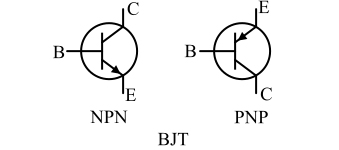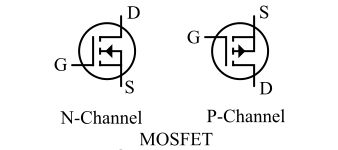Introduction
In the heart of every electronic circuit, transistors reign supreme. These small but powerful semiconductors have revolutionized technology, leading to advancements that would have seemed like magic mere decades ago. To grasp the magnitude of these devices, we must first understand their different types, each with their unique characteristics and applications. This article will introduce BJT and MOSFET in detail. And compare BJT and MOSFET.
Understanding Basic Principles
A transistor, in its simplest form, is a semiconductor device used to amplify or switch electronic signals. The key components of these devices are the emitter, base, and collector in BJTs (Bipolar Junction Transistors), or the source, drain, and gate in MOSFETs (Metal-Oxide-Semiconductor Field-Effect Transistors).
What is BJT (Bipolar Junction Transistor)?
BJT, or Bipolar Junction Transistor, is a type of transistor that uses both electron and hole charge carriers. In contrast to Field Effect Transistors (FETs), which are unipolar and use either electron (n-channel FET) or hole (p-channel FET) charge carriers, BJTs are more versatile.

BJTs come in two types: NPN and PNP, with different polarities. They have three layers of semiconductor material and two pn junctions. The three regions in a BJT are called the emitter(E), base(B), and collector(C).
What is MOSFET (Metal-Oxide-Semiconductor Field-Effect Transistor)?
MOSFET, short for Metal-Oxide-Semiconductor Field-Effect Transistor, is a specific type of field-effect transistor (FET) that is widely used for amplification and switching applications. It's one of the foundational building blocks in modern electronic devices.
The basic structure of a MOSFET includes three layers - a conducting source(S) and drain(D), separated by a thin insulating layer of silicon dioxide, and a third layer, a metal gate(G), deposited on top. The voltage applied to the gate controls the current flowing between the source and drain.

There are two types of MOSFETs: N-channel and P-channel. The N-channel MOSFET uses electrons as the charge carriers, while the P-channel uses holes.
Analyzing the Differences: BJT vs MOSFET
The operational principles of BJT and MOSFET transistors diverge significantly. While the BJT is a current-controlled device, the MOSFET operates as a voltage-controlled device. This operational divergence extends to their structure, with BJTs exhibiting a three-layer (npn or pnp) structure, while MOSFETs showcase a four-layer (pnpn) structure. Moreover, when considering power requirements, the BJT typically demands more power due to its lower input impedance compared to the high-impedance MOSFET. Lastly, in circuit applications, BJTs are often preferred for analog circuits, while MOSFETs dominate digital circuits. The table below compares the details of BJT and MOSFET.
BJT vs MOSFETCharacteristic | BJT | MOSFET |
|---|
Control method | BJT is controlled by current | MOSFET is controlled By voltage control |
Input resistance | Low | High |
Output impedance | High | Low |
Exchange speed | Slower than MOSFET | Faster than BJT |
Power consumption | BJT is higher because it is current driven | MOSFET is Lower because it is voltage driven |
Structure. | BJT has a three-layer structure, including emitter, base and collector. | MOSFET has Four-layer structure, including source, drain, gate, substrate |
Drive capability | High | Medium |
Operating temperature | BJT is higher than MOSFET | MOSFET is lower than BJT |
Noise | High | Low |
Frequency response | BJTs are ideal for high frequency applications | Moderate, MOSFETs are less demanding on frequency response than BJTs |
Linearity | Better | Worse |
Cost | BJT costs are generally lower | MOSFET cost is generally higher |
Saturation voltage | Low | High |
Thermal stability | Better | Worse |
Apply | BJT is mainly used in audio amplifiers, radio frequency circuits, signal modulation, etc | MOSFETs are mainly used in integrated circuits, computers, high-frequency applications such as radio frequency amplifiers, etc. |
When to use bjt vs mosfet?
Selecting between a BJT and a MOSFET depends on multiple factors, including the nature of your application, power requirements, desired frequency of operation, and the required level of amplification. For instance, if you are aiming for low-power applications or need high-speed switching, MOSFETs might be the better option.
Conclusion
Choosing the right transistor, either BJT or MOSFET, can significantly impact the efficiency and functionality of your electronic circuit. Understanding the key differences between these two popular types of transistors not only provides insight into their operation but also equips you to make more informed decisions, driving your technological innovations to new heights.
FAQ
What does bjt mean? | What does bjt stand for ?
BJT stands for Bipolar Junction Transistor. It's a type of transistor used in electronics for amplifying or switching signals. They come in two types: NPN and PNP.
How a bjt can be used as a switch?
A Bipolar Junction Transistor (BJT) acts as a switch by regulating voltage at its base terminal. No base voltage means no current flows (off state), while sufficient base voltage allows current flow (on state). This is key in digital circuits.
How to identify bjt terminals?
To identify BJT (Bipolar Junction Transistor) terminals:
Set a multimeter to diode check mode.
Connect leads to two terminals. If you see a forward bias reading, you've found the base and either the collector or emitter.
Repeat with the third terminal. The one showing a higher reading with the base is the collector; the other is the emitter. Always refer to the manufacturer's datasheet when possible.
Why is MOSFET better than BJT?
MOSFETs offer advantages over BJTs in several ways: They're voltage-controlled leading to lower power consumption; they have faster switching speeds, making them ideal for high-frequency applications; they generally produce less heat and can be fabricated to smaller sizes; and they can be paralleled directly for higher power applications. However, the best choice depends on the specific application.
When to use mosfet vs bjt?
Choosing between MOSFET and BJT depends on voltage levels, switching speed, power consumption, frequency response, thermal stability, and cost. MOSFETs excel in high voltage, fast switching, power-efficient, and high-frequency applications, while BJTs are thermally stable, low-cost, and better for low voltage applications.

Nantian Electronics a professional distributor of electronic components, providing a wide range of electronic products, saving you a lot of time, effort and cost through our meticulous order preparation and fast delivery service.
Share this post


